DMV test 4: Road Safety
1) Rules of the Road:
1. Speed Limits
1- You must comply with speed limits. They are based on the design of the road and the types of vehicles that use them. They take into account things you cannot see, such as side roads and driveways where people may pull out suddenly and the amount of traffic on that road.
2- Speed limits are posted for ideal conditions. If the road is wet or icy, if you cannot see well, or if traffic is heavy, you must slow down. Even if you are driving the posted speed limit, you can get a ticket for traveling too fast for road conditions.
2. Speeding
1- The best way to prevent speeding is to know how fast you are going. Check the speedometer often. People are not very good at judging how fast they are driving.
2- The faster your vehicle is going, the more distance it will take to turn, slow, or stop. For example, stopping at 60 mph does not take twice the distance it takes at 30 mph, as one might think, but over three times the distance!
3- Driving safely means adjusting your speed for road and traffic conditions, how well you can see, and obeying speed limits. Driving Too Slow. Going much slower than other vehicles can be just as bad as speeding. It tends to make vehicles bunch up behind you and causes the other traffic to pass you. If vehicles are piled up behind you, pull over when it is safe to do so and let them pass. You should either drive faster or consider using roads with slower speeds.
3. Stopping

1. Stopping suddenly is dangerous and usually points to a driver who was not paying attention. When you brake quickly, you could skid and lose control of your vehicle. You also make it harder for drivers behind you to stop without hitting you.
2. Try to avoid panic stops by seeing events well in advance. By slowing down or changing lanes, you may not have to stop at all. If you do, you can make a more gradual and safer stop. Remember, you must come to a complete stop at a stop sign or stop line.
3. How Well Can You See?
If something is in your path and you need to stop, you need to see it in time to be able to stop. It takes much longer and a farther distance to stop than many people think. If the pavement is dry and you have good tires and brakes:
1. At 50 mph, it can take you about 400 feet to react to something you see and bring your vehicle to a stop. That is about the length of a city block.
2. At 30 mph, it can take about 200 feet to stop. That is almost half a city block in length.
If you cannot see 400 feet ahead, it means you may not be driving safely at 50 mph. If you cannot see 200 feet ahead, you may not be driving safely at 30 mph. By the time you see an object in your path, it may be too late to stop without hitting it.
4. Right-of-Way
1- Where vehicles, bicycles, or pedestrians are likely to meet one another and there are no signs or signals to regulate traffic, there are rules that dictate which driver must yield the right-of-way.
2- The law says who must yield the right-of-way. It does not give anyone the right-of-way. You must do everything you can to prevent striking a pedestrian or another vehicle, regardless of the circumstances.
The following “right-of-way” rules apply:
1) You must obey signals given by a law enforcement officer, even if the officer’s signals contradict the traffic signal.
2) Drivers must yield the right-of-way at all times to pedestrians who are in a marked or unmarked crosswalk.
3) Drivers must yield the right-of-way to bicyclists where a bicycle path crosses the roadway.
4) Pedestrians using a guide dog or carrying a white cane have absolute right-of-way.
5) Drivers turning left must yield to oncoming vehicles going straight.
6) Drivers entering a traffic circle or rotary must yield to drivers already in the circle.
7) At an intersection where there is no stop sign, yield sign or oncoming traffic signal, drivers must yield to vehicles coming from the right.
8) At a four-way stop, the driver reaching the intersection first goes first (after coming to a complete stop). If more than one vehicle arrives at the same time, the vehicle on the right goes first
9) Drivers entering a road from a driveway, alley or roadside must yield to vehicles already on the main road.
10) Drivers may not enter an intersection unless they can get through it without having to stop. You should wait until traffic ahead clears so that you are not blocking the intersection.
11) Drivers overtaking/ passing a vehicle traveling in the same direction must yield to that vehicle, even if the vehicle is slowing or coming to a stop.
12) Drivers are required to yield the right-of-way to a bus traveling in the same direction when the bus appropriately signals.
13) You must yield the right-of-way to a police vehicle, fire engine, ambulance or other emergency vehicle using a siren, air horn or a red or blue flashing light. When you see or hear an emergency vehicle approaching from any direction you must pull over to the right edge of the road, or as near to the right as possible, and stop your vehicle. You must remain stopped until the emergency vehicle has passed, unless otherwise directed by a State or local police officer or a fire fighter. If you are in an intersection, drive through the intersection before you pull over.
14) You must stop for a school bus that is stopped with its red lights flashing whether it is on your side of the road, the opposite side of the road, or at an intersection you are approaching. You are not required to stop if the bus is traveling towards you and a median or other physical barrier separates the roadway. After the school bus red lights have stopped flashing, watch for children along the side of the road and do not proceed until they have completely left the roadway and it is safe to proceed.
15) You must yield the right-of-way to trains crossing the roadway.
5. Roundabouts
1- Roundabouts are intersections that are controlled by a circular island in the center. They may have
one lane or two lanes. Entering traffic must yield the right-of-way to circulating traffic.
2- Simply position your vehicle correctly and use your turn signals to indicate where you want to go.
3- When approaching a roundabout, slow down. You must yield to traffic already in the roundabout and to any pedestrians in the crosswalk. If there is more than one lane as you approach the roundabout, follow the posted signs and lane-use controls to choose the proper lane for your intended movement.
4- Enter the roundabout when there is a sufficient gap in traffic, use your right turn signal when you are about to reach your intended exit point, and yield to any pedestrians in
5- Crosswalk on the exiting leg. Do not stop within the roundabout to allow traffic to enter the roundabout from another leg.
6. U-Turns
1- U-turns are not legal everywhere.
2- Before you make a U-turn, check for signs prohibiting them.
3- Never make a U-turn on an expressway/ highway.
4- When making a U-turn, give a left turn signal, stop, check for approaching traffic. Proceed into the outside or right hand lane traveling in the opposite direction.
7. Parking
1- Drivers are responsible for making sure that their vehicle is not a hazard when it is parked. Be sure it is in a place that is far enough from any travel lane to avoid interfering with traffic and visible to vehicles approaching from either direction.
2- Always park in a designated area if possible.
3- Always set your parking brake when you park. Leave the vehicle in gear if it has a manual transmission or in “park” if it has an automatic transmission.
4- Check traffic before you open the door. Get out of the vehicle on the curbside if you can. If you have to use the street side, check traffic before you get out. Shut the door as soon as you can after getting out.
5- Never leave the ignition keys in a parked vehicle. It is a good habit to lock the doors whenever you leave your vehicle.
6- If you must park on a roadway, park your vehicle as far away from traffic as possible. If there is a curb, park as close to it as you can.
https://www.youtube.com/watch?v=IPImlSRL9CY
7- When you park on a hill, turn your wheels sharply towards the side of the road or curb. This way, if your vehicle starts to roll downhill, it will roll away from traffic.
8. No-Parking Zones
1- There are many areas where you cannot park. Check for signs that may prohibit or limit parking. Some parking restrictions are indicated by colored curb markings.
Do not park:
1) In an intersection.
2) On a crosswalk or sidewalk.
3) In a construction area if your vehicle will block traffic.
4) Within 25 feet of a stop sign.
5) Within 25 feet of a pedestrian safety zone.
6) Within 10 feet of a fire hydrant.
7) More than one foot (12 inches) from the curb.
8) Blocking a driveway, alley, private road or area of the curb removed or lowered for access to the sidewalk
9) On a bridge or overpass or in a tunnel or underpass.
10) On the wrong side of the street (opposite direction of traffic)
11) In a space marked for the handicapped, unless you have a handicap license plate or placard.
12) On the roadside of a parked vehicle (double parking).
13) On railroad tracks.
14) Where a sign says you cannot park.
15) In a bike lane
2) Lights
1- Crashes often happen when one driver does not see another driver or when one driver does something the other driver does not expect.
2- It is important that drivers let other road users know they are there and what they plan to do.
1) Headlights:
1. Besides helping you see at night, headlights help other people see you. If necessary, flash your high
beams to tell other road users you are there.
2. Remember to turn on your headlights whenever you have trouble seeing others. If you have trouble seeing them, they may have trouble seeing you.
- Use your headlights:
1. On rainy, snowy or foggy days, it is sometimes hard for other drivers to see your vehicle. In these conditions, headlights make your vehicle easier to see. Remember, if you turn on your wipers, turn on your headlights. It’s the law.
2. When it begins to get dark. Even if you turn them on a little early, you will help other drivers see you.
3. Whenever you are driving and lights are necessary, use your headlights. Parking lights are for parked vehicles only.
4. When driving away from a rising or setting sun, turn on your headlights. Drivers coming towards you may have trouble seeing your vehicle. Your headlights will help them see you. It is much harder to see at night.
- Here are some things you can do that will help you see better at night:
1. Use your high beams whenever there are no oncoming vehicles. High beams let you see twice as far as low beams. It is important to use high beams on unfamiliar roads, in construction areas, or where there may be people along the side of the road.
2. Dim your high beams whenever you come within about a one-block distance of an oncoming vehicle.
3. Use your low beams when following another vehicle or when in heavy traffic.
4. Use the low beams in fog or when it is snowing or raining hard. Light from high beams will reflect back, causing glare and making it more difficult to see ahead. Some vehicles also have fog lights that you should use under these conditions.
5. Do not drive at any time with only your parking lights on! Parking lights are for parking only. If a vehicle comes toward you with high beams on, flash your headlights quickly a couple of times. If the driver fails to dim the lights, look toward the right side of the road. This will keep you from being blinded by the other vehicles’ headlights and allow you to see enough of the edge of the road to stay on course. Do not try to “get back” at other drivers by keeping your bright lights on. If you do, both of you may be blinded. Here are some things that limit how well you can see and hints you can follow to be a safer driver:
6. You must be closer to an object to see it at night than during the day. You must be able to stop within the distance you can see with your headlights. Your high beam headlights will let you see about 400 feet ahead. You should drive at a speed that allows you to stop within this distance, or about 50 mph.
7. Rain, Fog, or Snow. In a very heavy rain, snowstorm, or thick fog, you may not be able to see much more than 200 feet ahead. In a very heavy downpour, you may not be able to see well enough to drive. If this happens, pull off the road in a safe place and wait until it clears.
8. You may not know what is on the other side of a hill or just around a curve, even if you have driven the road many times. If a vehicle is stalled on the road just over a hill or around a curve, you must be able to stop. Whenever you come to a hill or curve where you cannot see over or around, adjust your speed so you can stop if necessary.
3) Horn
- Use Your Horn for Safety. People cannot see you unless they are looking your way.
- Use it whenever it will help prevent an accident. If there is no immediate danger, a light tap on the horn should be all you need.
A. Give your horn a light tap:
1. When a person on foot or on a bike appears to be moving into your lane of travel.
2. When you are passing a driver who starts to turn into your lane.
3. When a driver is not paying attention or may have trouble seeing you.
B. If there is danger, do not be afraid to sound a SHARP BLAST on your horn. Do this when:
1. A child or older person is about to walk, run, or ride into the street.
2. Another vehicle is in danger of hitting you.
3. You have lost control of your vehicle and are moving towards someone.
C. When Not to Use Your Horn. There are several occasions when you should not use your horn. They include:
• Encouraging someone to drive faster or get out of the way.
• Notifying other drivers of an error.
• Greeting a friend.
• Around blind pedestrians.
• When approaching horses
4) Turn Signals
1. Other drivers generally expect you to keep doing what you are doing. You must warn them when you are going to change direction or slow down.
2. This will give them time to react (if necessary), or at least not be surprised by what you do.
3. You should use your turn signals or hand signal before you change lanes, turn, merge into traffic, or park.
4. Signal even when you do not see anyone else around.
5. Try and signal at least three seconds before you make your move.
6. Be careful that you do not signal too early, wait until you have reached that point before signaling.
7. If another vehicle is about to enter the street between you and where you plan to turn, wait until you have passed it to signal your turn. If you signal earlier, the other driver may think you plan to turn where they are and they might pull into your path.
8. After you have made a turn or lane change, make sure your turn signal is off. After small turns, the signals may not turn off by themselves. Turn the signal off if it has not clicked off by itself. If you don’t, others might think you plan to turn again.
Signal When You Slow Down
Your brake lights
let people know that you are slowing down. Always slow down as early as it is safe to do so. If you are going to stop or slow down at a place where another driver does not expect it, tap your brake pedal quickly three or four times to let those behind you know you are about to slow down. Such as:
1. Turning off a roadway that does not have separate turn or exit lanes.
2. Parking or turning just before an intersection.
3. Approaching an intersection where you expect to turn.
4. Avoiding something in the road that a driver behind you cannot see, including stopped or slowing traffic.
Hand Signals

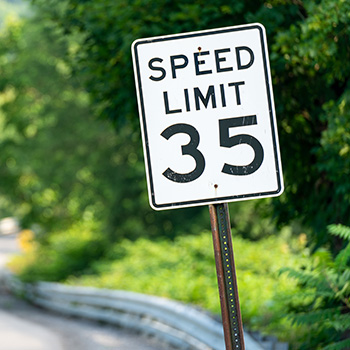

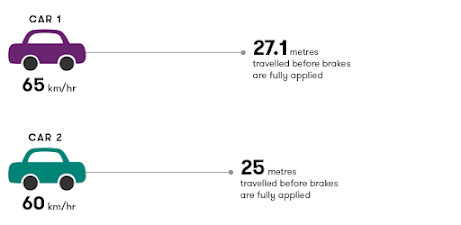




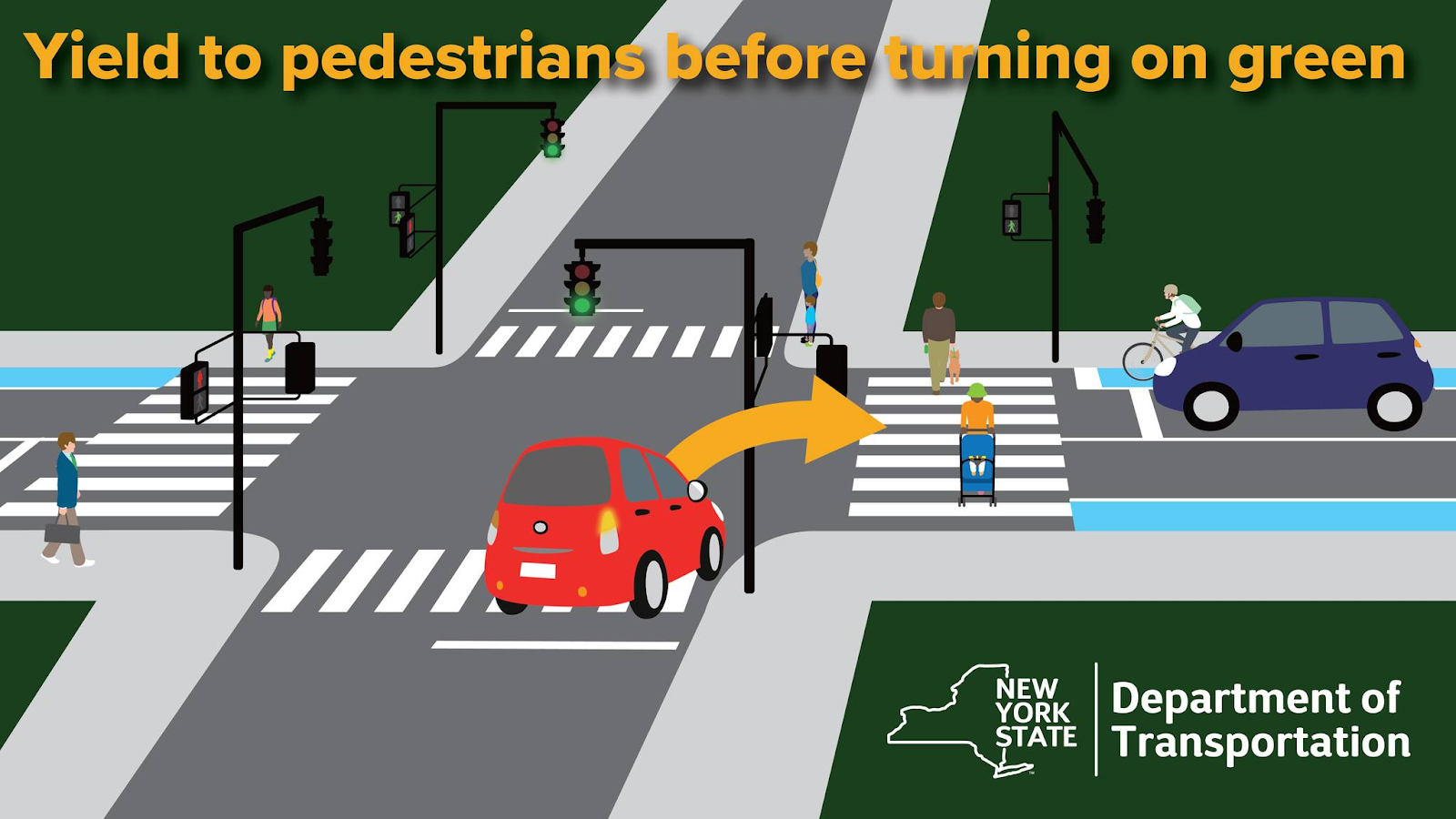




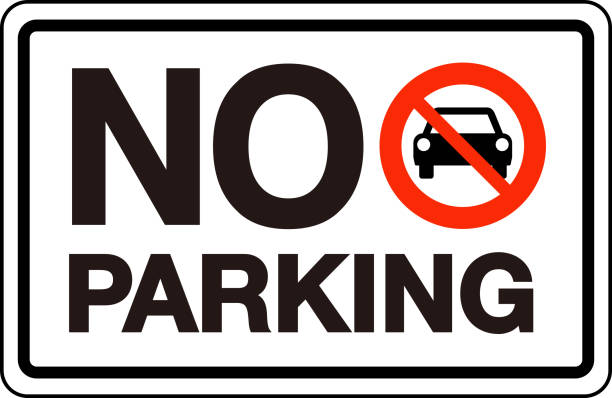













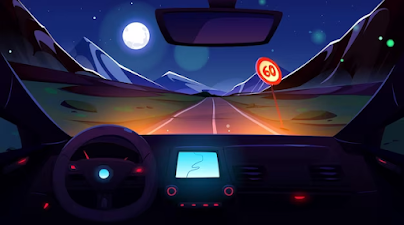


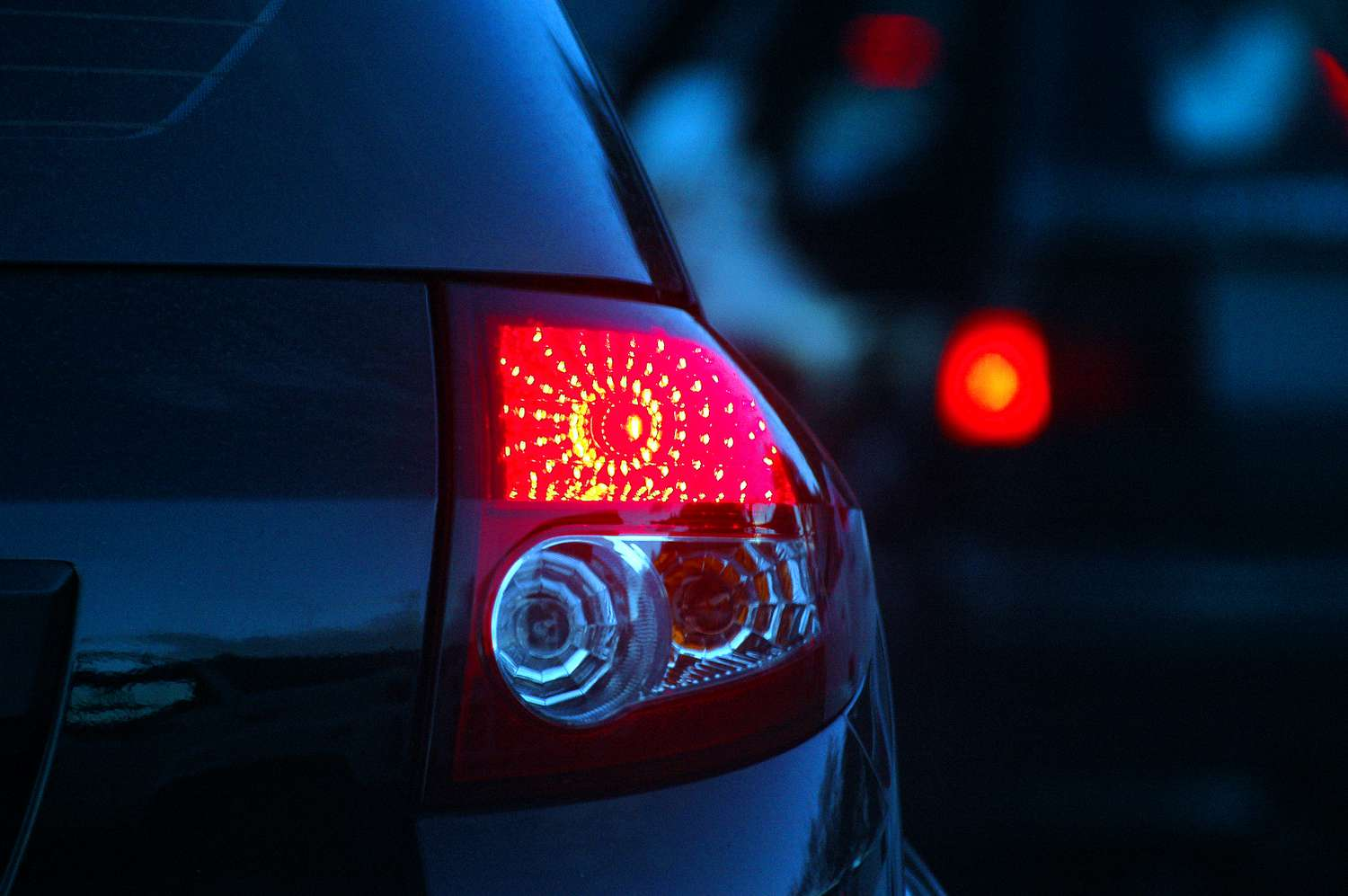



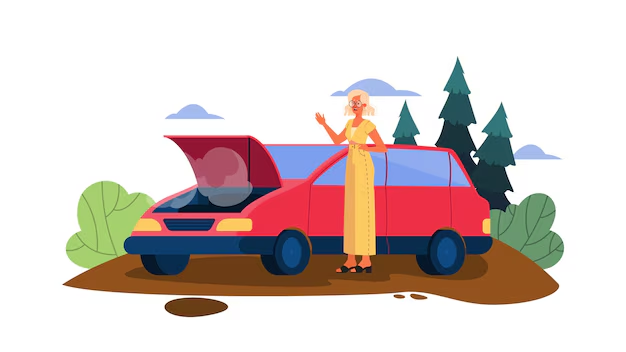






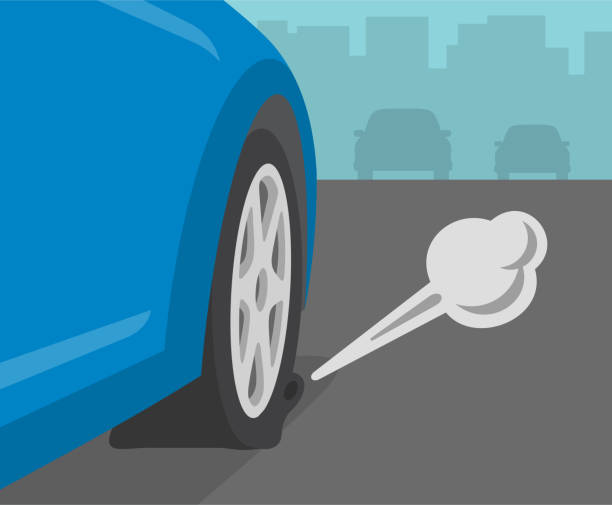







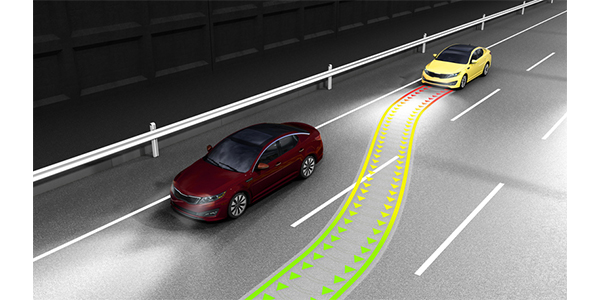
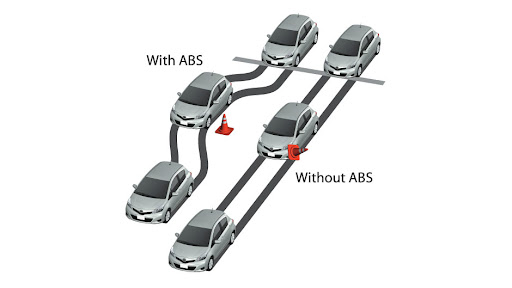






تعليقات
إرسال تعليق